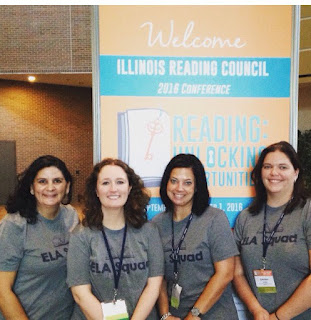And then I remembered my book twin, and her quest to read books 1-40 of The Baby-Sitters Club in sequence by the end of the year. We had agreed to both read #18 over the break.
I was transported back to 1988 and found myself in New York City with the gang, exploring museums, walking through Central Park, and going to the theater. Mix in a little middle school drama, 80's fashion, and old friends, and I was wishing I was actually there in New York. Reading these books now, as a literacy coach, I am amazed at the craft work involved in the telling of her books. Before CCSS Standard 6 was all the rage, point of view was on Ann M. Martin's radar. Well done!
I finished the book, and really wanted to fly to New York. Since that is not a realistic option, I remembered another book that I had upstairs in my waiting to be re-read pile. Last summer, I had purchased From the Mixed-Up Files of Mrs. Basil E. Frankweiler. I received the book as a gift from my 4th grade teacher long, long ago but the box had been misplaced. I bought a new copy, with the intention of reading it last summer, but never did. My old copy has since been found (!!!), and I finally decided to re-read it.
Why now, might you ask?
The story takes place in New York City. They don't go to the American Museum of Natural History, like the BSC, but they do stay at the Metropolitan Museum of Art. The main character of Mixed-Up Files is named Claudia, just like one of the main BSC members. And, after Mary Anne talked the whole book about tourism in New York City, I wanted to read more.
From page 1, I knew I had made the right choice. Enter my #BookSnaps. :)
What a great read! To be truthful, I think I might have had the Art Institute of Chicago in my head for most of the setting, but reading about New York in the 1960s, and comparing it to the description in the late 1980s, was interesting to do. Claudia's development as a character, and her reasoning for running away, was a hidden bonus to the re-read. To be honest, my comprehension has greatly improved since I was a 4th grader. I was a fluent reader, but not a deep reader, back then. I'm glad that is now part of our instructional goals. :)
I was sad the book ended, so I read the afterword from the newest copy of my book, because it had hit a 35th year anniversary since my 6th grade read. Hearing from E.L. Konigsburg about how the city of New York would be in some ways both the same and different for Claudia and Jamie in 2002 only deepened the comparison to The Baby-Sitters Club setting connection. It turned out that the Met had actually written about it in their Museum Kids newsletter, too. I quickly googled it, and there it was!!! Here is the PDF if you are a Mixed-Up Files fan. There is a whole section on Michelangelo, since the mystery of the book is based around him. Suddenly, I kind of want to re-read The Davinci Code.
What does all of this have to do with anything?
At the #LearnLAP Twitter chat about book clubs, one of the questions asked about tools that would help kids be successful. Here was my response:
We often hear the complaint that kids are "just reading" during Reading Workshop. That somehow, the act of reading a novel isn't enough. Now, that is true if the kids are not actually reading. If they are holding a book quietly in hopes the teacher won't notice them, then we have a problem. But, if they choose a book (like BSC #18), finish it, choose another one (like Mixed-Up Files), finish it, then go to the internet and find a nonfiction article to follow up, then isn't that what we want? That wasn't my intention when I opened up BSB #18. I just wanted to try #BookSnaps, and keep a promise to my book twin. But, since the books mattered to me, I finished both of them in 2 days. Yes, I'm an adult. But, I am also a READER. Maybe we need to tell stories like this to our students, to help them see that the books they CHOOSE to read can make all the difference.
On that note, my own reluctant yet fluent 2nd grader reader just got books 1-4 of the Princess in Black series. Let's hope that this character speaks to him as much as "the Claudias" did to me! Maybe we will even make #BookSnaps about her. :)
Thanks, Paul and Teresa, for a great #LearnLAP chat!





























































